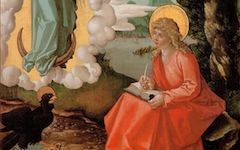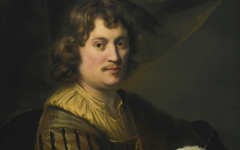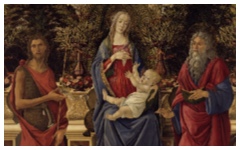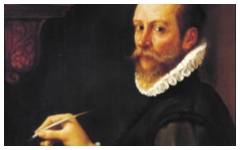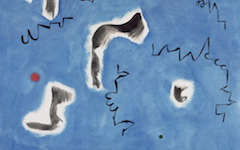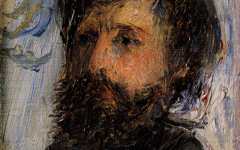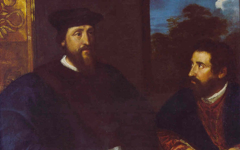Writers and Writing
Writing and drawing, the action of using a pencil or pen to make marks on paper, are visually similar processes. The poetic mind in any medium is also similar as well. Yet when confronted with, say, Courbet’s Portrait of Baudelaire we observers of art will think: “This is a poet. The title identifies him as Baudelaire; he looks like Baudelaire. He must be writing.” This form of conventional perception has little in common with the poetic instincts of the writers themselves or even of our own ideas about literature. In the nineteenth century, for instance, novelists like Balzac, Proust and Oscar Wilde were using stories about artists to illustrate their own creative processes and no sensitive reader has any trouble in recognizing this. Basil Hallward, the painter in Wilde’s The Picture of Dorian Gray, is a prime example. Yet the illusion of reality is so persistent that we cannot imagine the reverse so easily: that a visual image of Baudelaire is Courbet. It is worth remembering too that, in French at least, the same word is used for the action of both writing and drawing: écrivant.
Most Recent Articles
All Articles (Alphabetical by Artist, then Title)
See how the second of a pair of paintings by Bosch is also "behind the eye."
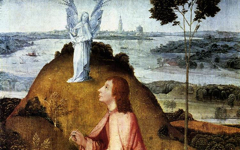
Bosch’s St. John on Patmos (1504-5)
This a reminder of how close the association was between writing and painting in the Middle Ages
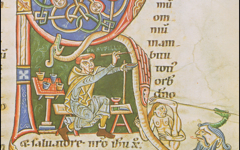
Brother Rufillus’ Self-Portrait (c. 1170-1200)
Learn how artists identified with other animals, even in the Renaissance.
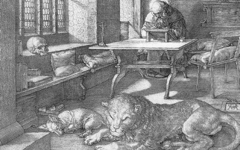
Dürer’s St. Jerome in his Study (1514)
Find out how Eakins' portrait of his father becomes one of himself
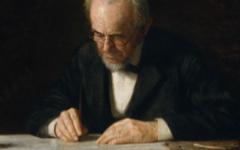
Eakins’ The Writing Master (1882)
Keep an eye out for the poses of painting because......
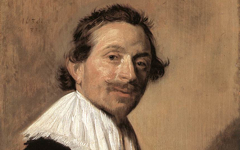
Frans Hals’ Portrait of Jean de la Chambre (c.1634)
How historical accuracy was not Leonardo's purpose in a portrait

Leonardo’s Portrait of Ginevra de’ Benci (c.1474-8)
This angel is not just a charming detail but central to the whole conception of the altarpiece
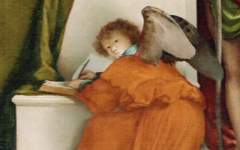
Lotto’s San Bernardino Altarpiece (1521)
An early example of how art is a guide to what we now call "self-knowledge".
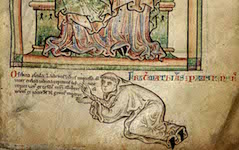
Matthew Paris’ Virgin and Child with Artist Kneeling (c.1250)
Miró's variations on his name inspired one image after another, all unseen until now. Take a look.

Miró‘s Name in Miró‘s Art (1937-69)
See how Miró wrote his name in large letters across his canvas yet left his viewers blind
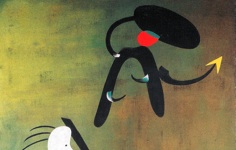
Miró‘s Painting (1933)
Discover yet another example of how Miró's composition is based on his own name
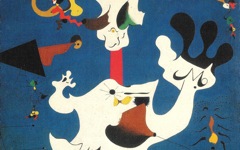
Miró‘s Potato (1928)
How the four evangelists are really, in the artist's mind, draughtsmen
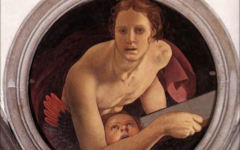
Pontormo’s and Bronzino’s Evangelists (1525-8)
Evidence for art's self-referential allegory pre-dates the High Renaissance
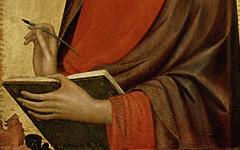
Simone Martini’s St. Luke (c.1330’s) and other saints
A spiritual journey is one of the basic plots of literature and a common metaphor in both philosophy and religion. Why not art?
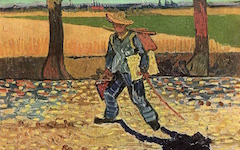
Van Gogh’s On the Road to Tarascon (1888)
Find out how saint, Virgin and ox are all the artist
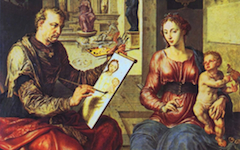
Van Heemskerck’s St. Luke Painting the Virgin and Child (1538-40)
There is more to Vermeer than a pretty scene and dull symbolism

Vermeer’s The Love Letter (c.1669-70)
© Simon Abrahams. Articles on this site are the copyright of Simon Abrahams. To use copyrighted material in print or other media for purposes beyond 'fair use', you must obtain permission from the copyright owner. Websites may link to this page without permission (please do) but may not reproduce the material on their own site without crediting Simon Abrahams and EPPH.


